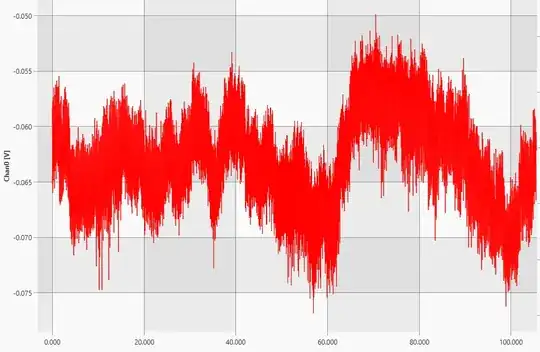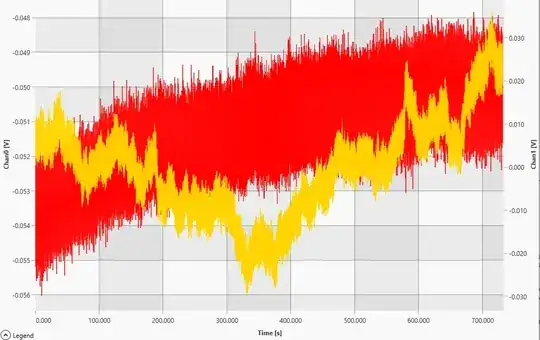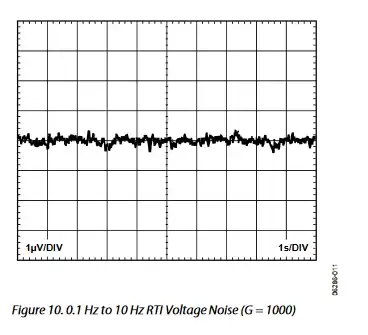In one of our designs we are doing signal conditioning of a load cell (Wheatstone bridge)
We have an issue where the main instrumentation amplifier an AD8224 has an output signal that wanders by around 20mV over the course of 10's of seconds.
We have gone through troubleshooting the signal chain and tracked the issue back to here, the above plot is taken with the inputs to the amplifier shorted out and connected to 0V via 500ohms.
Supply to the op-amp is +-15V, and has 0.1uF bypass directly near the IC, and 10uF about 3cm away. We are using a gain resistor of 49.9ohm which should give a gain of around 991.
We are not worried about the high frequency noise, this gets tidied up latter in the chain.
I am keen to hear peoples thoughts on what could be causing this, as I am out of ideas.
EDIT: A bit more poking around and I was able to find one of our old board revisions that does not show the same issue, these boards are modular, and I was able to slot in the new and old next to each other to compare the results.
Channel 0 is the old revision and shows what I would expect of changes due to thermal effects.
Channel 1 shows the same board as per above.
I note that the old board used a TI INA2126 instead of the AD8224
From poking around the datasheets I also found the AD8222 is very similar to the AD8224 but with a better temperature co-efficient and will order some in for testing, however I feel this is clutching at straws.
EDIT: An additional interesting observation is that if I remove the gain resistor (setting a gain of 1) the wandering goes away, from this would I be correct to infer the issue is in the input stage?


